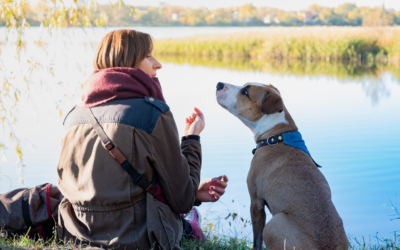Contrafreeloading, or working for food when there is some freely available, is something that we use quite often with animals in our care. This concept is used in puzzle feeders, food balls, games we play, and also in stuffed food devices like Kongs or Wobbls.
We use this concept a lot in behaviour and training, especially to help with mental stimulation and with management. For example, keeping a dog busy while we’re doing something that might make them excited or anxious). They can also promote natural behaviours, provide exercise, and allow animals to engage with their environment.
History of contrafreeloading
The concept of contrafreeloading was first studied in the 60s with rats. Rats would choose to press a bar for food even when they had free access to the same food nearby. From this, and other research, the term contrafreeloading was developed, technically meaning against getting something without giving anything in return. While we don’t fully understand this behaviour yet, there seems to be a need or desire for many animals to work for food.
Contrafreeloading was initially really surprising as it goes against a theory in ecology called the Optimal Foraging theory. The theory predicts how animals behave when looking for food. In simple terms, it predicts that an animal will always try to maximize their fitness, either by expending the least amount of energy to get food, or by trying to get foods that provide the most energy, or both. Working for food, or expending energy to get food, when the same food is freely available, goes against this model.
There have been many suggestions for reasons why an animal might do this. Some examples are boredom, different rates of reinforcement, or helping animals feel better in an uncertain environment or when they feel uncertain. It could also be gathering information about the environment, and when trying to get attention.
The environment the animal is in can also influence contrafreeloading. As animasl become more hungry and as the effort to get the food increases, they’re less likely to show contrafreeloading.
Dogs and food puzzles
Many studies have found that different strategies (including food puzzles or toys) in shelter and kenneled dogs improved their behavior. For example, one study in shelter dogs looked at a combination of frozen Kongs and reinforcement-based training. Dogs jumped less and were quieter and calmer when meeting potential adopters. Interestingly, a couple different studies have found that adoptability increased in dogs that had food toys in their kennels. It seems that people do like to see these offered to dogs.
A small study in kenneled dogs found positive effects with the use of Kongs with treats inside. Dogs with Kongs spent more time eating, showed increased activity, and barked less than their normal amount.
Not only do dogs seem to like working for their food, it seems like they also experience positive emotions with problem solving opportunities. A study looked at dog behavior when they were solving different types of puzzles. The dogs were trained with puzzles that included things like pressing levers or buttons, or pushing objects, and others. In the test phase, some dogs were rewarded with a treat when they correctly solved a new puzzle. The other dogs were given a treat at some point, but it was not related to their success. Those that solved the puzzle and received a reward wagged their tails much more, were more active, and were more excited. Those that randomly received a reward showed signs of frustration in the form of chewing the device.

Cats and food toys
In a recent study, researchers surveyed cat owners to see how many were using food puzzles. They found that 30% of cat owners used puzzles, and another 18% had tried them but weren't using them. Those that were no longer using them were more likely to categorize their cat as ‘lazy’ or ‘dumb’ than those that hadn’t ever tried food puzzles. They concluded that cats failing to interact with toys might affect their owner’s attitude about their intelligence and interest in toys or enrichment in a negative way.
In case studies we have seen many benefits to the use of food puzzles. These include less aggression with people and other cats, weight loss, less attention-seeking behaviors, improving litter box use, and decreased anxiety and fear. However, in studies cats are more likely to eat from freely available food than choose a puzzle.
What does this mean for those working with dogs and cats?
We really don’t have much research in household dogs in terms of contrafreeloading and providing puzzle toys, balls, and other methods of getting food. Due to some of the research in sheltered and kenneled dogs, as well as anecdotal evidence, many do recommend these strategies. Many people with dogs in their home report benefits to these strategies. It’s really an area where we need more research to find the best strategies for the use of these toys.
In cats, we have less evidence for contrafreeloading. It’s possible that the motivation, training methods, and other factors are involved.
For animals that we keep in our homes, I still highly recommend the use of puzzle toys, balls, and other methods of feeding. However, I don’t recommend making animals work for their entire food allocation for the day.
If you’re interested in more of the science behind this blog post, visit The Behaviory Blog which is my blog written for pet professionals, and covers the topic in greater depth with scientific references.



